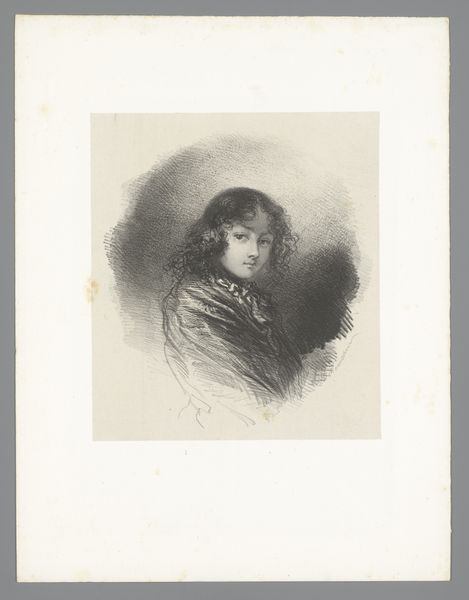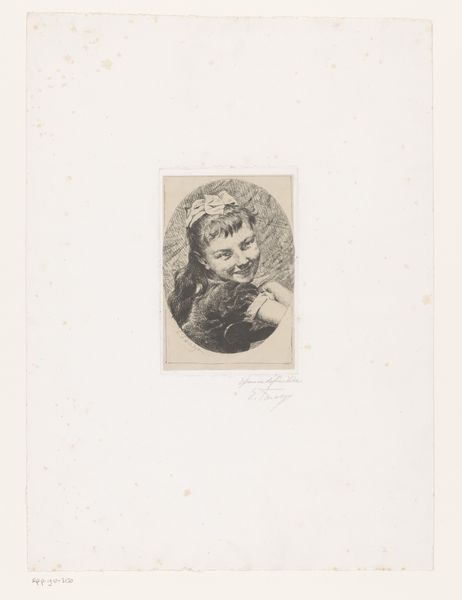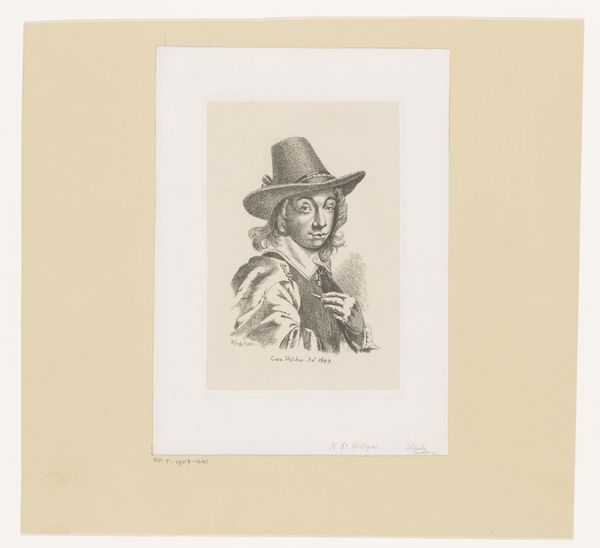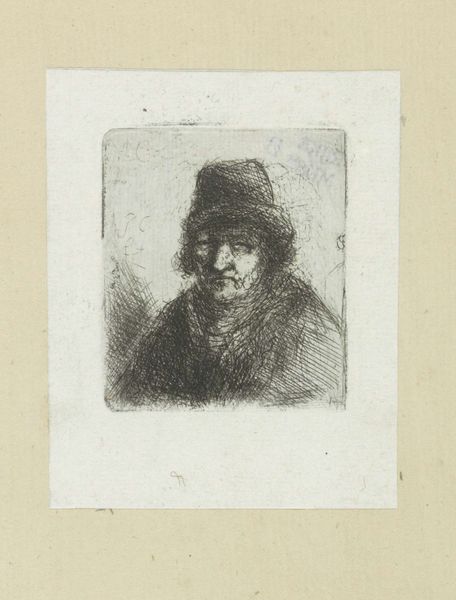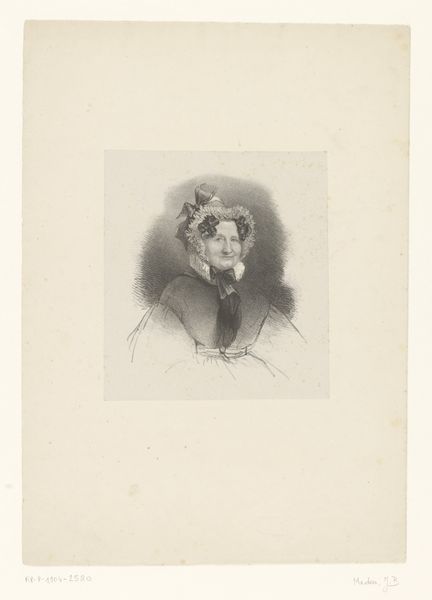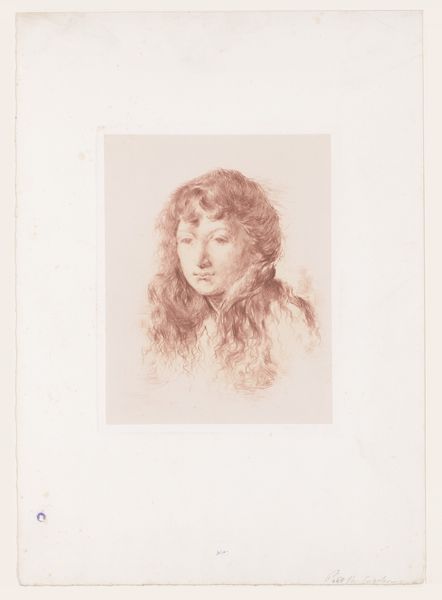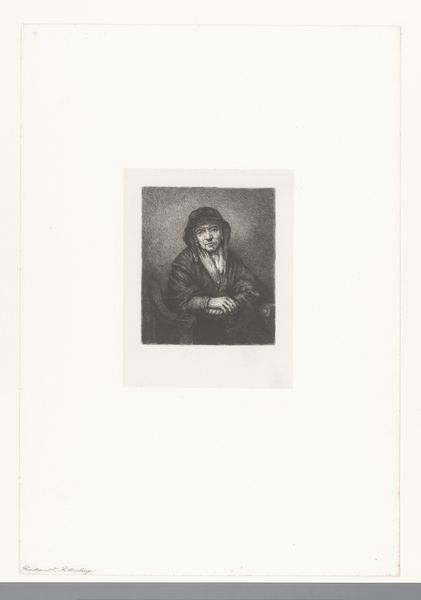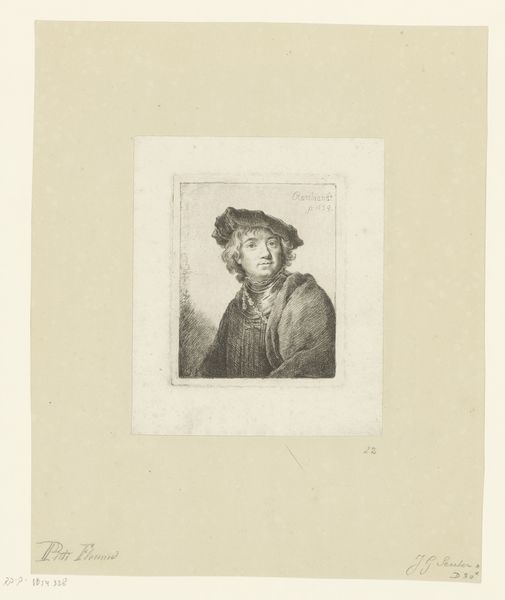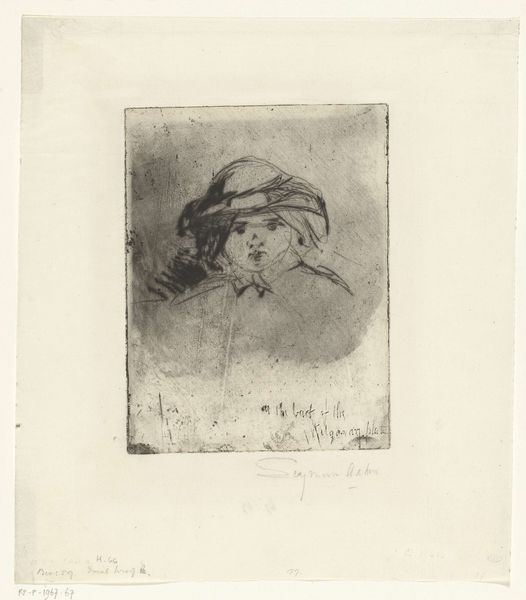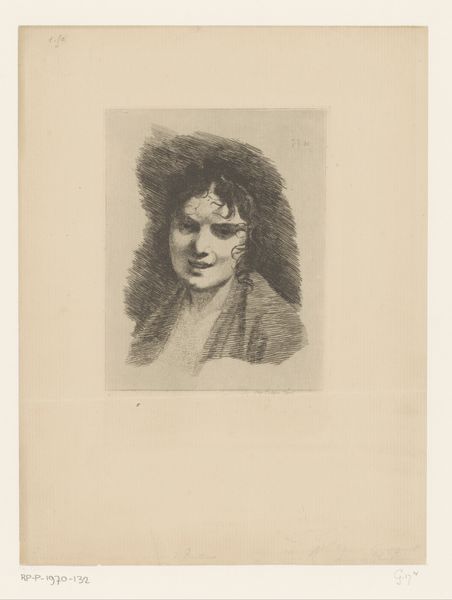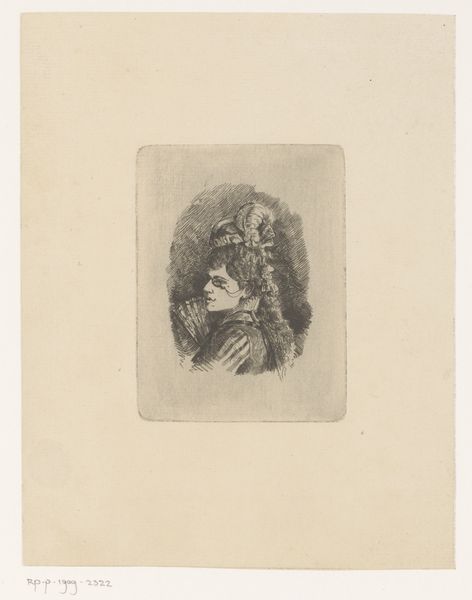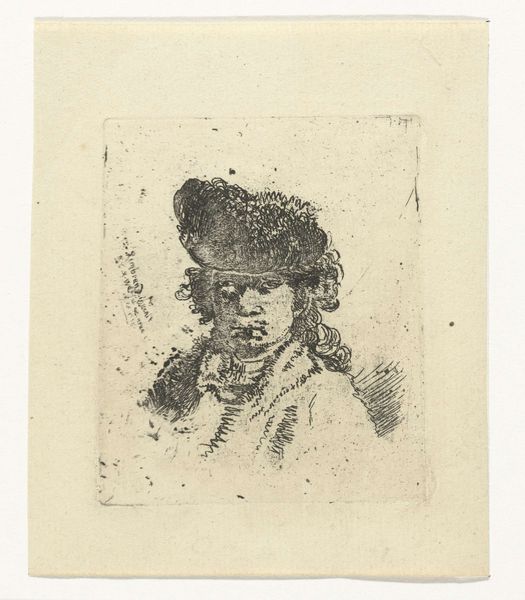
drawing, print, pencil
#
portrait
#
pencil drawn
#
drawing
#
light pencil work
# print
#
pencil sketch
#
light coloured
#
old engraving style
#
pencil
#
pencil work
Dimensions: height 124 mm, width 96 mm
Copyright: Rijks Museum: Open Domain
Editor: We're looking at Léopold Flameng's "Jongeman met een hoed met brede rand," created in 1859, a pencil drawing that evokes a sense of intimate observation. What strikes me is the contrast between the detailed face and the almost sketch-like body and background. What can you tell me about it? Curator: From a materialist perspective, it's interesting to consider the labour and social context of printmaking in 1859. This wasn’t fine art for a wealthy elite in the way painting was. Prints democratized images; consider the economics. Who was the intended consumer? What was the function of a relatively quick, reproductive technology of pencil on paper that may have turned into mass reproductions? How does the accessibility of the image influence our interpretation? Editor: So, you're suggesting that its value isn't necessarily in its artistic skill, but more in its function within a wider economic and social framework? The choice of pencil then wasn't just an aesthetic choice? Curator: Precisely. The pencil lines, the 'sketch-like' quality you mentioned, become tools, or industrial components of visual manufacture. It suggests a speed of production, and perhaps a lower price point which directly impacted the social reach. The materials used and the speed of execution would allow access to art, through affordable material, expanding viewership and influence. How was his process impacting how we view images and disseminate knowledge? Editor: That gives me a whole new way to consider it! So it's not just about *what* is depicted, but how and *why* it was made accessible? Curator: Exactly! By understanding the materials, process, and the intended market, we can grasp its place in history beyond aesthetics. The means of production dictate what it stands for. Editor: This is amazing, it changed my perspective! I now understand to value it beyond a pretty face. Curator: I’m so glad it has, now go and apply that to everything!
Comments
No comments
Be the first to comment and join the conversation on the ultimate creative platform.
